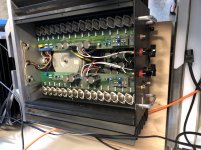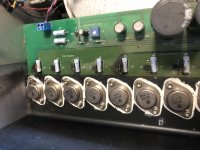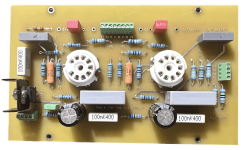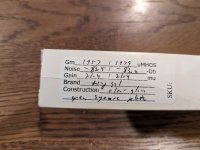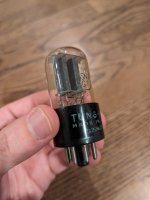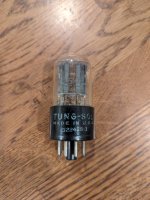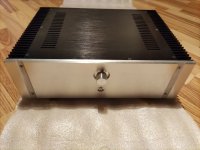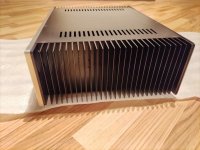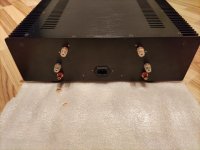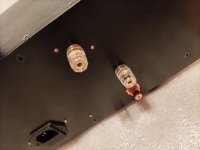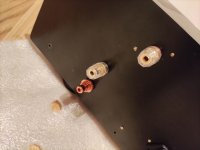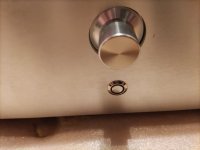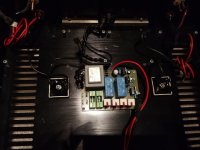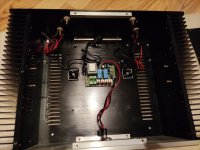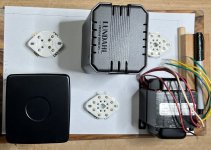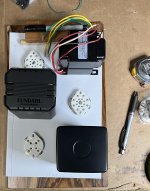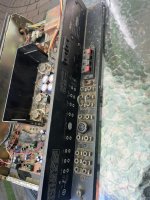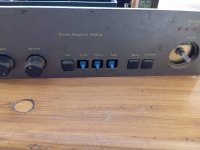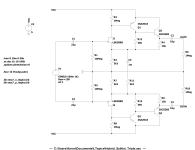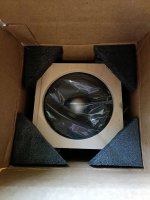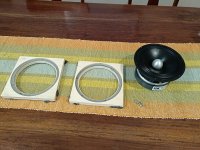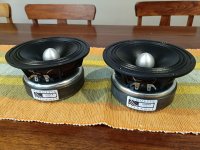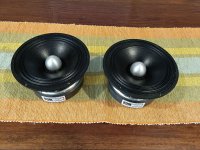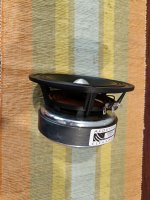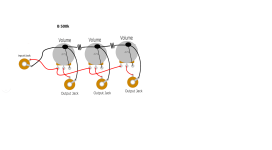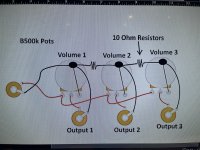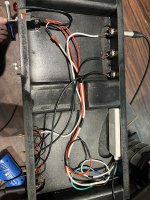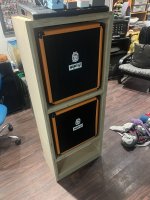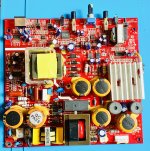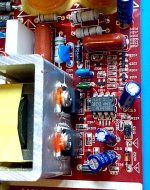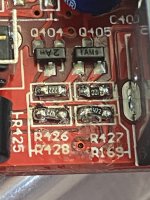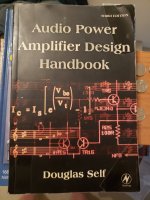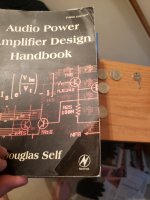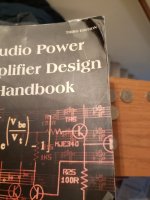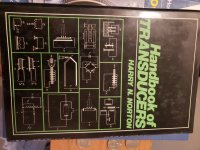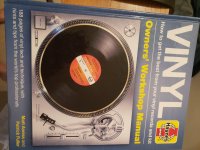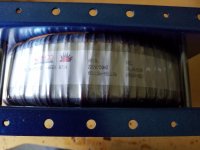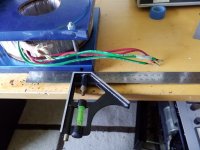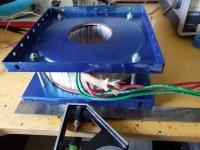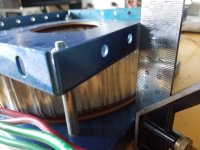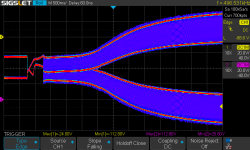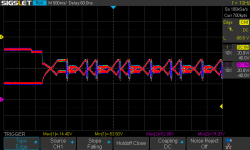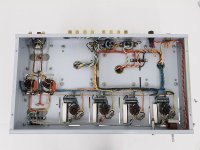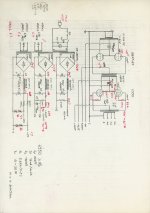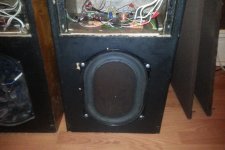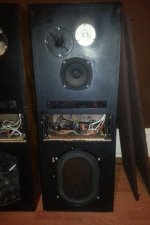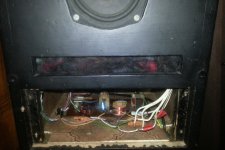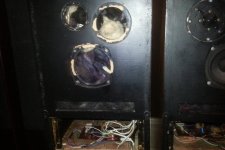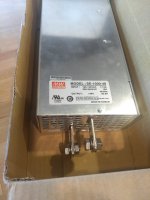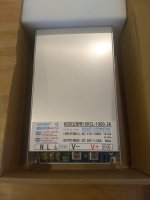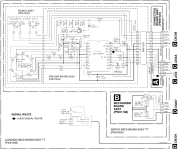Inductive interaction/coupling between inductors test
Inductive interaction/coupling between inductors is many times underrated/ignored and some times just tested on how the inductance changes between coils which is just one part of the real problem.
I was researching about crossover inductors position practices myths and facts(see here) on how audible and at what power levels this really became a problem but I was unable to find any A/B blind tests on the net.
Then to make the long story short(sorta), I was completely chocked on my own findings, I was able to drive a compression driver connected to an 0.7mH 20AWG inductor by exiting an 1.5mH 14AWG inductor and placing them just few inches in the lay-down position, the closer they become the louder the compression driver becomes, and in the recommended position I fount that putting the outer windings out of phase is the least affected position.
My tests was very simple and no expensive measurement gear was required.
Used parts list if some what to reproduce the tests(parts don't have to be exact):
1) An 1.5mH 14AWG inductor.
2) An 0.7mH 20AWG inductor.
3) An 33uF MKP capacitor.
4) An non-inductive 20W resistor.
I've used a piezo compression driver for the test as those things are sensitive but I believe any sensitive 8-ohms CD can be used as well, also I've used a standard Class A/B amplifier and put some load(fast electronic music) into an 12W 5-ohms resistor until the 1.5mH inductor made some electro-magnetic field to make an screw driver vibrate inside the hole then I've stopped increasing the volume, at this point the 12W 5-ohms resistor is hot to the touch but not burning, to my surprise I was able to even hear the kick-drum into the compression driver😱.
To conclude this simple test I believe that even 4 inches of proximity is not enough for lay-down oriented crossover coils, also the most affected are the users of high sensitivity speakers such as compression drivers.
Here is the simple test diagram:
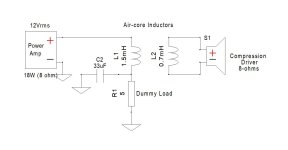
Here is the recommended inductor position with coil outer windings out of phase:
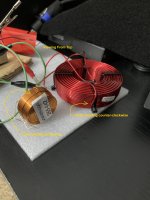
Here is the modified crossovers from my old bookshelf speaker build, the midrange is way cleaner at high volume and the center image is now wider and immersive:
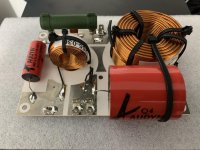
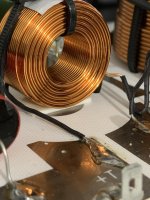
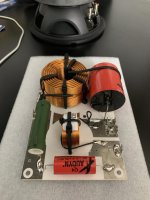
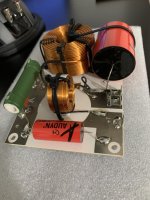
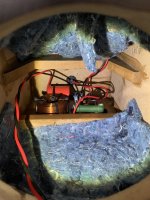
Regards!
I was researching about crossover inductors position practices myths and facts(see here) on how audible and at what power levels this really became a problem but I was unable to find any A/B blind tests on the net.
Then to make the long story short(sorta), I was completely chocked on my own findings, I was able to drive a compression driver connected to an 0.7mH 20AWG inductor by exiting an 1.5mH 14AWG inductor and placing them just few inches in the lay-down position, the closer they become the louder the compression driver becomes, and in the recommended position I fount that putting the outer windings out of phase is the least affected position.
My tests was very simple and no expensive measurement gear was required.
Used parts list if some what to reproduce the tests(parts don't have to be exact):
1) An 1.5mH 14AWG inductor.
2) An 0.7mH 20AWG inductor.
3) An 33uF MKP capacitor.
4) An non-inductive 20W resistor.
I've used a piezo compression driver for the test as those things are sensitive but I believe any sensitive 8-ohms CD can be used as well, also I've used a standard Class A/B amplifier and put some load(fast electronic music) into an 12W 5-ohms resistor until the 1.5mH inductor made some electro-magnetic field to make an screw driver vibrate inside the hole then I've stopped increasing the volume, at this point the 12W 5-ohms resistor is hot to the touch but not burning, to my surprise I was able to even hear the kick-drum into the compression driver😱.
To conclude this simple test I believe that even 4 inches of proximity is not enough for lay-down oriented crossover coils, also the most affected are the users of high sensitivity speakers such as compression drivers.
Here is the simple test diagram:

Here is the recommended inductor position with coil outer windings out of phase:

Here is the modified crossovers from my old bookshelf speaker build, the midrange is way cleaner at high volume and the center image is now wider and immersive:





Regards!
